SAQ is the callsign of the swedish VLF station of
Grimeton, activated during the twenties with the purpose of granting a
radiotelegraphic link between Europe and East coast of United States.
The beating heart of the station is the huge Alexanderson
alternator. It takes its name from the inventor.
It is capable of 200 kW of RF power at 17.2 kHz.
For every detail about the station and its history
please check the official site:
http://www.alexander.n.se/
Alexanderson alternator was used in several other
stations, with the same basic purpose: long distance transmissions. Here
follows some link to a couple of interesting articles:
http://en.wikipedia.org/wiki/Alexanderson_alternator
http://en.wikipedia.org/wiki/VLF_transmitter_Grimeton
Today the Grimeton alternator is the only one left working and operational. In 2004 it has been appointed as a World Heritage on UNESCO World Heritage list.
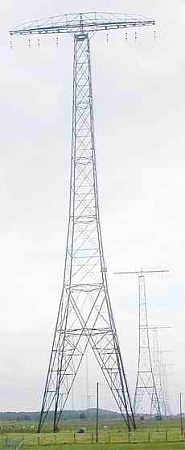
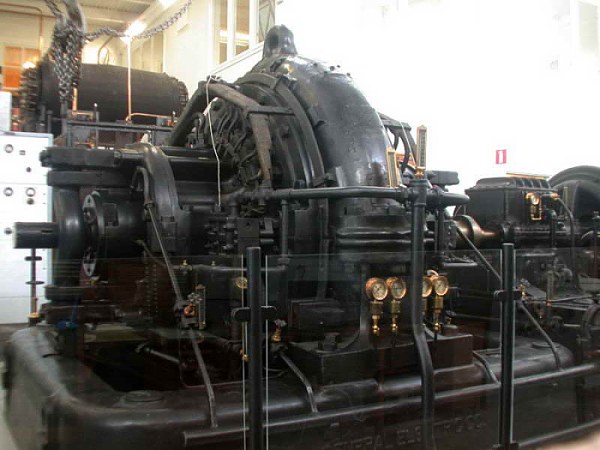
Grimeton/SAQ aerial
system. Photo courtesy: Wikipedia Alexanderson alternator
at Grimeton/SAQ. Photo courtesy: Wikipedia.
The radiating
system is massive as well. It is composed by six 127 meter high masts.
The masts are
placed at 380 meter intervals and at the top of the 46 meter high masts,
long crossarms are attached in order to carry the 12 wires feeding energy
into the six vertical radiating elements.
COMMEMORATIVE TRANSMISSIONS
The commemorative transmissions are scheduled on a yearly base, usually at the beginning of July, even if it possible that extraordinary transmissions take place on other periods or special events, such as during Christmas season.
Check out http://www.alexander.n.se/ to find out the official schedule.
The frequency is always 17,2 kHz, the mode is always CW.
Due to the high power used the coverage area is
very wide. In our country it can be easily received with modest receivers
and poor (short) aerials.
The only conditions needed is, as usual, to be
far from highly urbanized areas and from power lines.
RECEIVING STATION SETUP
During last transmission I moved to the countryside, just few km from my home. My intention was to test my brand new self made VLF receiver with a well known signal.
It was a very cold and foggy Christmas eve, I was
late as usual and it was
even early morning.
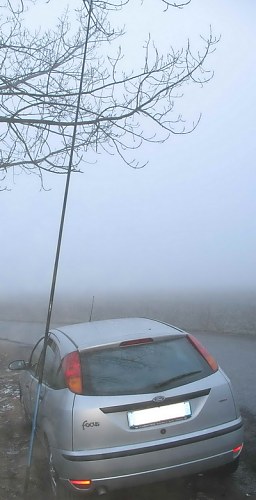 |

Both receiver were powered with a small sealed Pb-gel battery. |
The 7.5 meters long fishing rod, used as antenna. This is the
classical solution for HF activity during the holidays: light and ready in
five minutes.
A fishing rod is more practical than climbing trees to hook longwires and in this case the length of the aerial is more than enough.
The central wire passes from the bottom of the rod through the rear window to get to the passenger seat.
On the right:
my laptop and 2 VLF receivers: the old Inspire
RS-4 is located on the top of the new one.
I took the old one with me only for scruple, even
if already partially dismantled (earphone plug and level knob were missing).
I was SURE that the new one would have functioned
well.
Of course I was wrong.
The new-shiny-low power-high performance receiver
was not performing as expected and I decided to roll back to the old-faithful
RS-4 just 5 minutes before the beginning of the transmission.
As you can see there was a tangle of wires &
clamps.
In this rush against time I took out the audio
signal from the Inspire with some clamps, plugged in the antenna and all
was working, to my great relief.
My Inspire RS-4 is a simplified version of the original Nasa project:
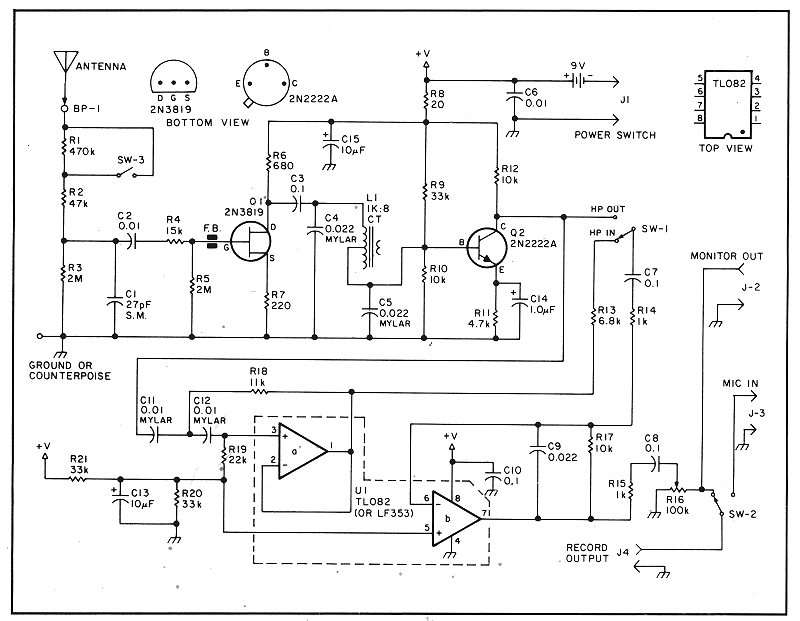
SAQ TUNE-UP PHASE
SAQ station perform a tune-up phase about 30 minutes
before the real transmission, so there is all the time to get well prepared
to record.
As every broadcast CW transmission a sequence of
"V" or "CQ CQ DE", followed by the callsign "SAQ", is transmitted almost
continuously.
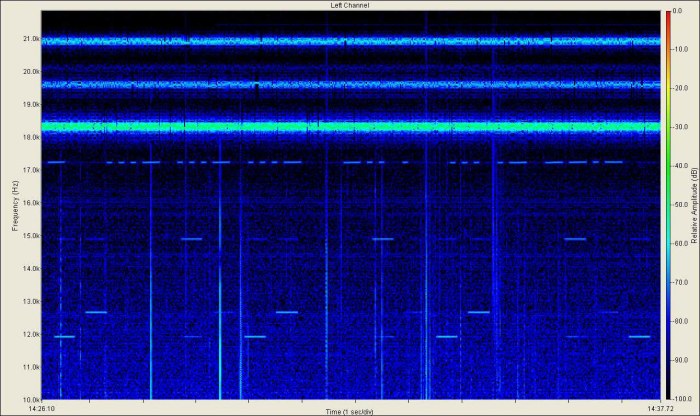
VVV DE SAQ, well readable at 17,2 kHz, ALPHA and RTTY stations also present.
REAL MESSAGES
The content of the real message, at least during the summer transmissions, is very random and there is not a standard message, excluded the preamble (presentation of the Grimeton Radio) and the end (QSL info and so on).
If your purpose is to obtain a QSL from SAQ, or send them a reception report, it's better to decode the whole message.
There are several ways to do that:
- You do not know Morse code, you have a computer running Spectrum Lab or similar, or even digital recorder connected to the receiver: record all the message and translate it later.
- You have bat-like ears and you know Morse code: you can write it down directly while earing it from your ultrasonic earphones.
- you do not have bat-like ears, you know Morse code and you have a computer connected to the receiver: it's very easy to set up a down-converter and a pass-band filter with Spectrum Lab, to get something like this:
SAQ is an Amateur Radio Station as well, so it is
possible to send QSL and reception reports via bureau. Do not forget to
include all (or a meaningful part) of the decoded message.
Please refer to the official web site for more
details.
As example here follows a part of the message received at my QTH last Christmas eve: the word "CHRISTMAS" is clearly visible.
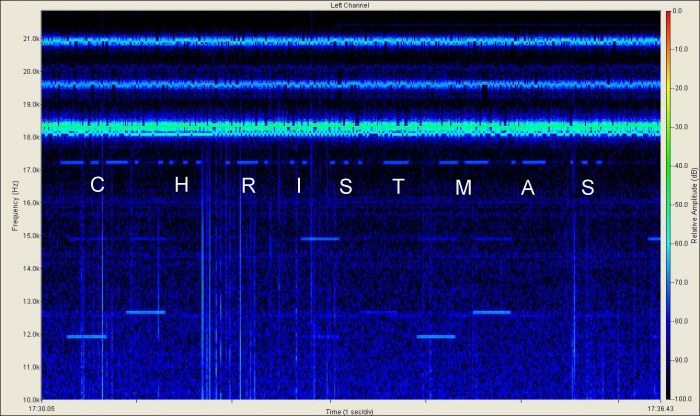
"CHRISTMAS" word is clearly readable.
CONCLUSIONS
The reception of SAQ is very easy. I listened it
just few kilometers from my home, in a open field, with an old receiver
and few meters of wire as antenna.
Nothing else is really needed. In some cases SAQ
has been received only with the sound card, a piece of wire and few components.
In this age of digital communications, microwave
and satellites thinking about the Alexanderson alternator and its massive
antenna system is absolutely fascinating.
Also, the fact that it has been appointed as a
World Heritage site should encourage VLF enthusiasts to try to receive
it, the interest of the people around the world is the only way to keep
the station alive and kicking for the next century and for the next generations.
Claudio Parmigiani, IZ2FER.
Feedback and comments are welcome, please send e-mail
to:
iz2fer@tiscali.it